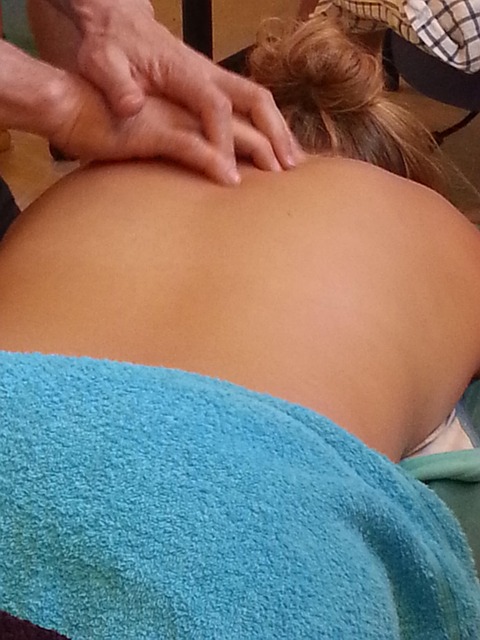Infrared light therapy for muscle healing is a non-invasive treatment gaining popularity in sports due to its ability to accelerate recovery by stimulating mitochondria, increasing blood flow, and reducing inflammation. It enhances athletic performance through improved cellular repair, muscle endurance, and delayed fatigue. However, athletes should balance benefits against potential risks and follow best practices for safe integration into training plans under professional guidance.
Red light therapy, a non-invasive treatment using infrared light, has gained attention for its potential to enhance athletic performance. This ancient concept is backed by modern science, as it accelerates muscle healing and reduces inflammation. By understanding the mechanisms behind red light therapy’s effects, athletes can unlock improved recovery, increased endurance, and enhanced overall performance. Let’s explore how this innovative approach integrates into training routines and its potential benefits versus risks.
Understanding Red Light Therapy for Muscle Healing
Red light therapy, specifically infrared light therapy for muscle healing, is gaining traction in the athletic world as a promising recovery tool. This non-invasive treatment involves exposing muscles to specific wavelengths of red and near-infrared light, which penetrate deep into the tissue. There, it stimulates mitochondria – the powerhouses of cells – to produce more ATP (adenosine triphosphate), the body’s primary source of energy.
This increased energy production at the cellular level promotes faster muscle repair and growth, reducing inflammation and pain associated with exercise. By enhancing blood flow and oxygen delivery to stressed muscles, infrared light therapy for muscle healing can speed up recovery times, enabling athletes to return to training and competition sooner.
Mechanisms Behind Its Athletic Performance Boost
Red light therapy, or infrared light therapy for muscle healing, has gained attention in the sports and fitness industry as a potential performance enhancer. Its mechanism behind boosting athletic performance lies in several scientific processes. First, red light is absorbed by mitochondria, often referred to as the ‘powerhouses’ of cells, leading to increased cellular energy production. This enhanced energy supply can improve muscle endurance and delay fatigue during intense physical activities.
Moreover, infrared light therapy promotes collagen synthesis, which plays a crucial role in tissue repair and regeneration. Accelerated muscle healing is a significant advantage, ensuring athletes recover faster from rigorous training sessions or competitive events. By reducing inflammation and oxidative stress, red light therapy also supports overall muscle health, allowing athletes to maintain consistent performance levels over time.
Scientific Evidence: Benefits and Potential Risks
Red light therapy, a non-invasive treatment using infrared light, has gained attention in the athletic world for its potential to enhance performance and speed up recovery. Scientific studies have explored its effects on muscle healing and performance metrics. Research suggests that infrared light therapy can improve cellular repair processes, increase blood circulation, and reduce inflammation, all of which contribute to faster recovery after intense workouts. This accelerated recovery may enable athletes to maintain higher training volumes without excessive soreness or injury risk.
While the benefits are promising, it’s essential to consider potential risks. Exposure to certain intensities of infrared light could cause skin irritation or eye discomfort. Long-term effects of regular use are still being studied, and individuals with specific health conditions or pregnant women should exercise caution. Balancing the benefits of red light therapy for muscle healing against these risks is crucial for athletes considering its integration into their performance routines.
Integration into Training Regimes: Best Practices
Infrared light therapy for muscle healing has gained popularity among athletes looking to enhance their performance and recovery. When integrated into training regimes, it can be a game-changer. The best practices involve incorporating sessions into off-training days or as a post-workout ritual. Typically, 10-15 minutes under specific wavelengths of infrared light is sufficient for muscle healing and performance improvement.
For optimal results, athletes should maintain consistency in their routine. This includes adhering to set durations and intensities, as well as regular sessions over time. Consulting with a sports medicine professional or trainer can help tailor the therapy to individual needs, ensuring safe and effective integration into existing training plans.
Red light therapy, or infrared light therapy for muscle healing, shows promise in enhancing athletic performance by accelerating recovery and improving muscle function. The scientific evidence suggests that it can reduce inflammation, stimulate mitochondria production, and enhance collagen synthesis. When integrated into training regimes, this non-invasive approach can provide a competitive edge while minimizing risks. However, further research is needed to optimize protocols and ensure safe usage for athletes.
